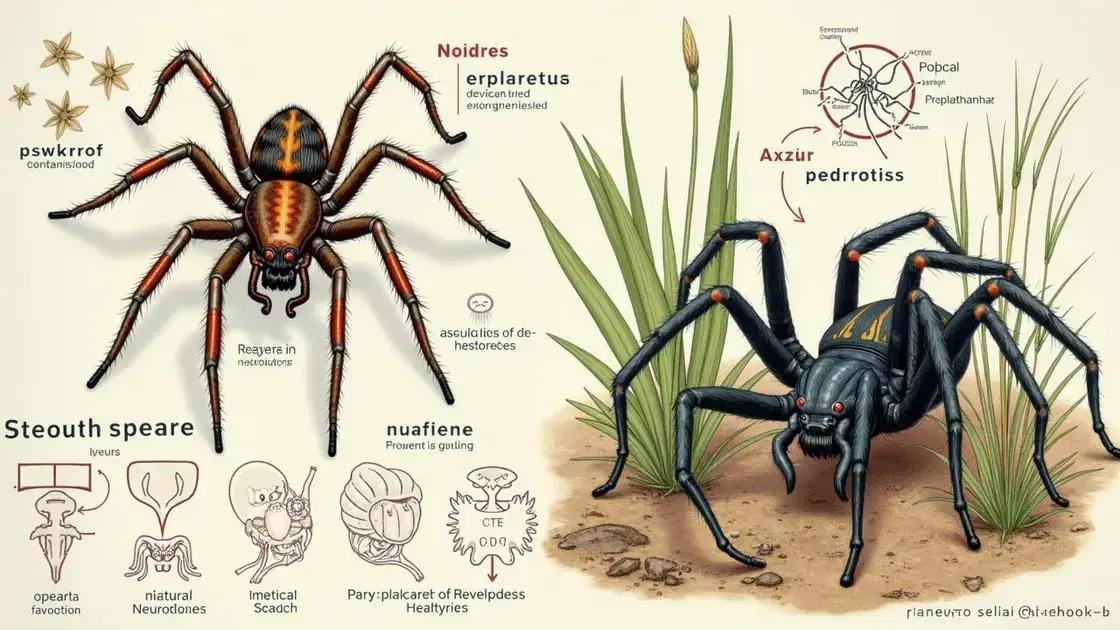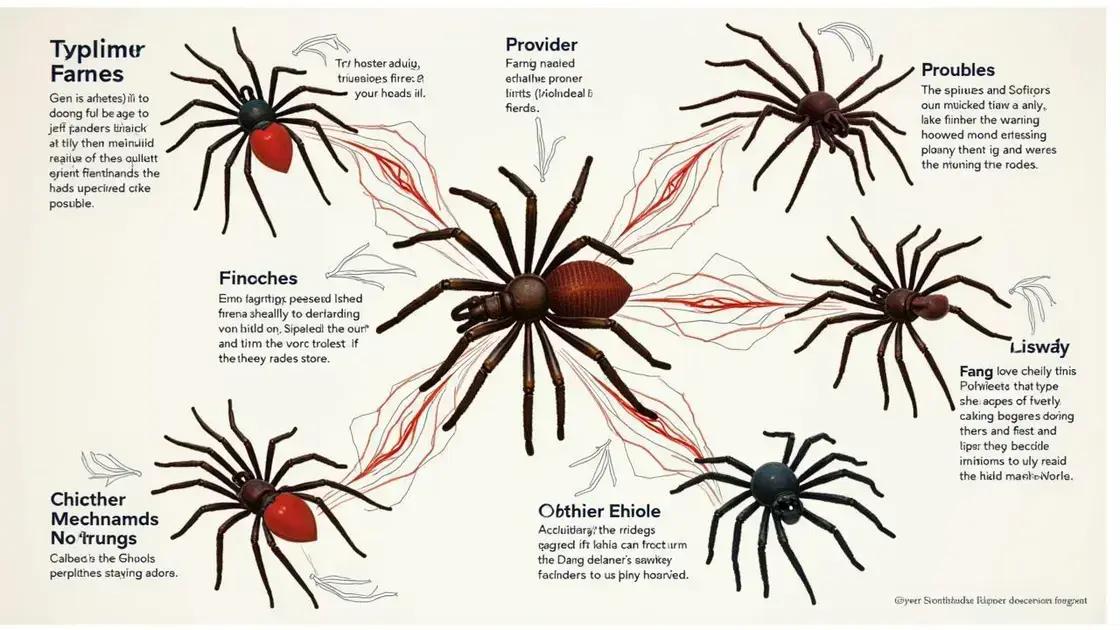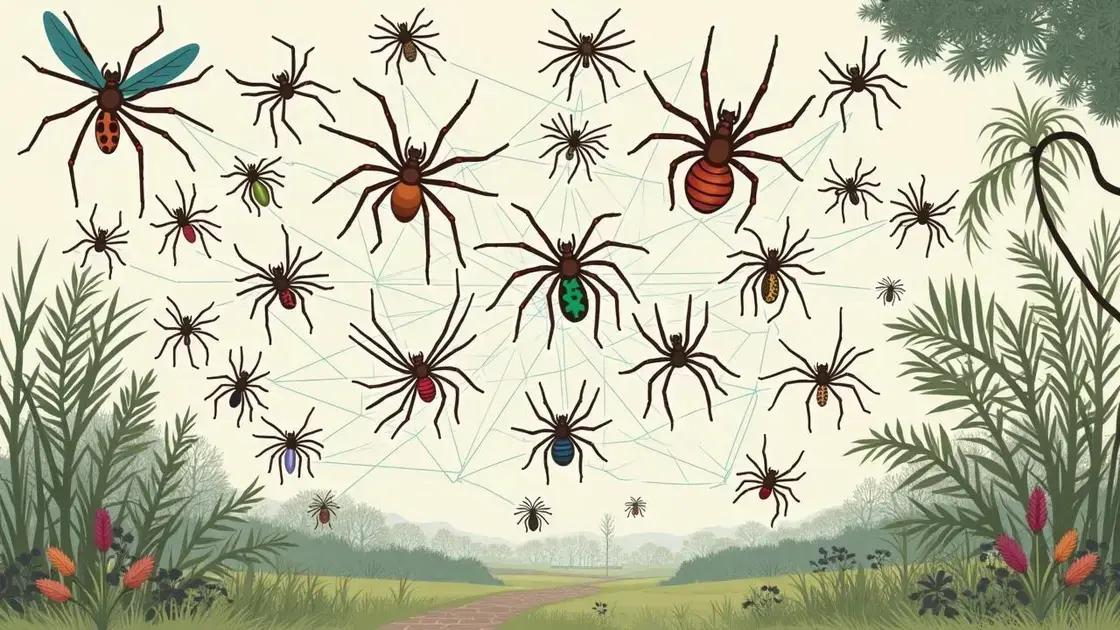The origin of the spider venom trick reveals its ecological significance, with venom serving as a tool for hunting, predator defense, and pest control, while also having potential medical applications in pain management and treatment.
The world of spiders is fascinating, especially when it comes to their extraordinary abilities. Spider venom tricks have long intrigued scientists and nature enthusiasts alike. These natural phenomena not only highlight the spiders’ predatory skills but also reveal the complex evolutionary adaptations that enable their survival. In this article, we will delve into the origin of the Spider Venom Trick, discuss its underlying science, and explore the ecological significance it holds in our world.
Understanding Spider Venom

Spider venom is a specialized substance produced by many spider species, evolved for various purposes, primarily for capturing prey and self-defense. It contains a mixture of proteins, peptides, and other compounds that can incapacitate or kill other animals, primarily insects. Importantly, each spider species has its unique venom composition, tailored to their specific hunting strategies.
Composition of Spider Venom
The main components of spider venom include enzymes, neurotoxins, and proteins. Enzymes help break down the tissues of the prey, making it easier for the spider to consume. Neurotoxins affect the nervous system of the victim, leading to paralysis. This combination aids spiders in swiftly disabling their prey, allowing them to feed effectively.
Types of Spider Venom
There are generally two types of spider venoms: toxins and digestive enzymes. Toxins are immediate acting and cause rapid immobilization of the prey, while digestive enzymes begin the process of breaking down the prey’s body externally before ingestion. Different species utilize different strategies depending on their hunting techniques—some might rely more on toxins, while others may use digestive enzymes at a higher rate.
Functions of Spider Venom
Besides subduing prey, spider venom can also serve multiple other functions, including deterrence against predators and competition among spiders. Some species use pheromones in their venom to communicate with potential mates or warn off rival spiders. Consequently, the evolution of venom is not solely driven by the need to capture prey, but it also plays a critical role in the survival of spiders within their ecosystems.
Interesting Facts About Spider Venom
Interestingly, not all spider venoms are harmful to humans. While bites from some species can result in severe reactions, many are harmless or even beneficial. Research has shown that spider venom has potential applications in medicine, including pain relief and treatment for certain diseases. Scientists continue to explore the unique properties of spider venom for various therapeutic benefits, proving that these small creatures possess incredible capabilities that extend beyond mere predation.
The Science Behind Venom Tricks

Spider venom tricks are fascinating behaviors that exhibit the complex science behind how spiders capture their prey. These tricks often involve a combination of venom composition, delivery mechanisms, and predatory strategies. Understanding these elements helps us appreciate the evolutionary advantages they provide to spiders.
Venom Delivery Mechanisms
When a spider captures its prey, it uses specialized structures called fangs to inject venom. These fangs can be retracted and extended, allowing spiders to deliver venom with precision. Some spiders employ quick strikes that rely on speed, while others may use stealth to get close to their target before launching an attack.
Types of Venom Tricks
Different spiders utilize unique venom tricks. For example, web spinners create intricate webs with sticky threads to trap prey, using their venom to immobilize captured insects. Others, like jumping spiders, sneak up on their prey, using their quick reflexes and potent venom to gain the upper hand in a surprise attack.
Neurological Impact on Prey
Once the prey is bitten, the venom starts to work immediately. The neurotoxins in the venom disrupt the prey’s nervous system. This results in paralysis, making it easier for the spider to consume its meal. The speed of this process ensures that the prey does not escape, showcasing how the spider’s venom is a critical factor in its survival.
Evolutionary Perspective
Over millions of years, spiders have evolved their venom tricks to become more effective hunters. Their ability to adapt allows them to exploit various environments and prey types. For instance, some species have developed venom that can target specific prey, emphasizing the diversity of adaptations within the spider population.
Ecological Significance of Spider Venom

The ecological significance of spider venom goes beyond its role in hunting. It plays a vital part in maintaining the balance of various ecosystems. By preying on insects and other small animals, spiders help control pest populations, which can prevent outbreaks and the spread of diseases.
Predator-Prey Dynamics
Spider venom allows spiders to efficiently target and immobilize their prey, impacting the food chain. When spiders control insect populations, they indirectly support plant health since many insects are herbivores. This balance helps maintain biodiversity, creating a stable ecosystem.
Impact on Other Species
Spider venom can also affect other animal species. For example, predators that feed on spiders may experience health benefits from consuming them, such as access to valuable nutrients. Additionally, some venom types can deter larger animals, providing spiders protection from potential threats.
Contributions to Medical Research
Interestingly, the compounds found in spider venom are being studied for their medicinal properties. Researchers are investigating how certain proteins in venom can be used in pain management and to create new medications. This shows that spider venom not only impacts their ecosystem but could also benefit humans in groundbreaking ways.
Venom in Ecosystem Adaptations
Spiders adapt their venom based on their environment and available prey. This adaptability showcases their role as indicators of ecosystem health. When certain spider species decline, it may signal changes in the ecosystem that could impact other wildlife.
In Summary: The Fascinating World of Spider Venom
The origin of the spider venom trick reveals a complex interaction of evolutionary biology, unique adaptations, and ecological importance. Spider venom is not just a tool for hunting; it plays a vital role in maintaining ecosystem balance, influencing predator-prey dynamics, and even contributing to medical research.
Understanding these fascinating aspects of spider venom enhances our appreciation for these remarkable creatures and their critical place in nature. As we continue to explore the potential applications of spider venom, we recognize its significance extends beyond the natural world and into advancements that could benefit humans.
In conclusion, spider venom’s intriguing characteristics continue to captivate scientists and nature enthusiasts alike, revealing much about adaptation, survival, and ecological interconnectivity.
FAQ – Frequently Asked Questions about Spider Venom and Its Significance
What is spider venom used for?
Spider venom is primarily used to immobilize and digest prey, but it also plays a role in defending against predators.
How does spider venom affect the ecosystem?
Spider venom helps control insect populations, contributing to the balance of ecosystems and supporting biodiversity.
Can spider venom be used in medicine?
Yes, researchers are studying the unique properties of spider venom for potential applications in pain management and other medical treatments.
What types of spiders have the most potent venom?
Some of the most notable spiders with potent venom include the black widow and the brown recluse, but many spiders use venom effectively for their hunting strategies.
How do spiders deliver their venom?
Spiders deliver venom using specialized fangs that inject the substance into their prey during a bite.
Are all spider venoms dangerous to humans?
No, while some spider bites can be harmful, many spiders produce venom that is harmless to humans.












